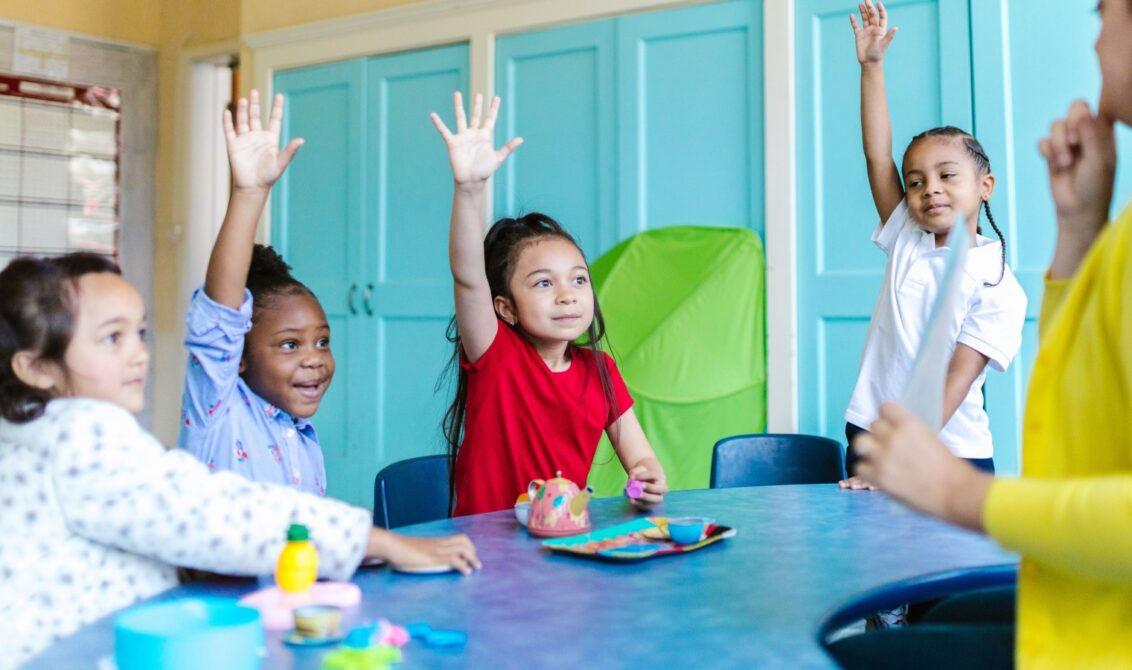
Often considered by many as childcare rather than education, early childhood education has often been neglected by governments who prioritise improving results in primary and secondary education. Yet we know that the early years are a crucial period in a child’s development. It is when the brain develops most significantly and what happens during these years can contribute enormously to a child’s later success in life.
Child development in the early years
The human brain is wired to learn from experiences. Both genetics and experience shape the brain and early childhood education offers unlimited opportunities for a child to learn by interacting with teachers, other children, and the world around them.
The work of Swiss psychologist Jean Piaget, one of the most influential theorists in the field of child development, divides a child’s cognitive process into four stages:
- Sensorimotor stage: Birth to 2 years
- Preoperational stage: Ages 2 to 7
- Concrete operational stage: Ages 7 to 11
- Formal operational stage: Ages 12 and up
At the preoperational stage, which is when children are likely to start their early childhood education, a child develops more sophisticated linguistic and thinking skills which help them interact with and understand the world.
At the age of three, children are just beginning to learn social skills so being around others is essential for their social and emotional development. Through interaction with caregivers, other adults and their peers, children learn how to share, take turns and recognise emotions in themselves and others.
However, cognitive and social and emotional development are inextricably linked. Neuroscience has proven that a child’s early emotional experiences can have an enormous effect on their ability to learn. This makes it essential to provide a positive learning environment in the early years classroom where all learners can thrive.
The seven areas of learning in early childhood education
Early childhood education provides children with the foundational skills they need in order to be ready for primary school. These can be divided into seven main areas:
1. Communication and language development
Communication should be the heart of every classroom. Make your classroom a positive environment where children feel comfortable sharing their thoughts and feelings, allowing them to build their linguistic repertoire.
Provide lots of opportunities for communication and interaction through activities and routines. Circle time can be a great opportunity to invite the children to share ideas and listen to each other. Reading stories with follow-up questions can be an excellent way of fostering communication skills and enriching vocabulary.
2. Physical development
Children love to move and we must ensure there are plenty of opportunities for movement and physical play during the day. Outdoor play using apparatus can help a child develop gross motor skills such as strength and coordination, as well as social skills such as turn taking.
However, fine motor skills are also a part of a child’s physical development. Sensory activities such as playing with and exploring different materials: sand, water, soil, and so on can help children develop fine motor skills as well as mathematical concepts. For example, pouring water into different containers can help children learn about volume as well as hand-eye coordination.
3. Personal, social and emotional development (PSED)
Children need to develop an awareness of their own emotions in order to understand how their behaviour can affect others. This is part of their social and emotional development as they learn to form relationships with other children.
In the early years classroom, we can guide children to manage their emotions and cooperate with others through activities and games. We can also help them set goals and work towards a growth mindset where each child has confidence in their own abilities.
4. Literacy development
Reading can help students develop communication and language skills, cognitive and social skills, and empathy. Not all children will have access to a range of books at home, so making stories a regular part of the school day can help narrow the literacy gap that can lead to disadvantaged students falling behind as they grow older.
Age-appropriate books also allow children to explore different worlds and contexts. In the early years classroom, read stories aloud and invite the children to predict what happens next, to turn the pages and to help you tell the story. Ask questions to help them develop higher order thinking skills and follow up with a role play where the children can experiment freely with the themes and language from the story.
For more ideas on how to foster a love of reading, check out Ten ways to create a reading culture in your school.
Children can also start to experiment with writing at this age. Not all children will be ready to use a pencil, but you can provide sensory activities for them to explore letters and sounds, for example with plastic or wooden letters or tracing letters in shaving foam.
5. Mathematics
Children in the early years classroom are ready to learn about numbers and counting. Some children may already be able to count, but it’s important to build connections between the abstract names of numbers and their meaning.
Using counting cubes, pebbles or other loose parts can help students understand the concepts behind simple maths such as counting, addition.
6. Understanding the world
A child’s personal experience helps build an internal picture of the world. By providing experiences and interactions with new places and ideas, we can build a child’s awareness beyond what they already know.
Take children on field trips to places in town and invite members of the community into the classroom. Stories will also help shape children’s understanding of our culturally diverse world.
7. Expressive arts and design
Providing students with frequent opportunities to interact with the arts can develop their understanding, self-expression, vocabulary and ability to communicate.
By incorporating art and music in the classroom, children should have access to a variety of materials, tools and techniques. Allow them to experiment with colour, design, texture and to share their creations. Foster imagination and creativity by encouraging children to make up or adapt stories. Sing songs together, dance or have the children move their bodies to music.
How to foster a love of learning
Children are hard-wired to want to learn about the world around them. All we need to do is to tap into their natural curiosity and show enthusiasm for the topic.
Here are a few tips to help spark curiosity and foster a love of learning in your classroom:
- Use realia and props from the real world where possible rather than plastic toys. Real objects are much more interesting!
- Use a variety of different resources including books, videos, songs and games.
- Avoid stopping an activity when students are really engaged in it. Finding the right time to stop an activity can be challenging but try to allow the children to finish it where possible.
- Involve sensory play and allow the children to get their hands dirty!
- Provide opportunities for pretend play, if possible with dress-up costumes and props.
Further reading
For more ideas on using play in the early years classroom, read the article Playing is learning for Early Years pupils.
Find out more about the Pearson Edexcel Early Years curriculum, our range of reception/early years resources for 3 to 5-year-olds, aligned to the latest education practices and designed to meet the needs of today’s global learners.
Sign up to receive our blog updates
Like what you read and want to receive more articles like this direct to your inbox? Subscribe to our blog and we’ll send you a fortnightly digest of the blog posts you may have missed, plus links to free resources to support your teaching and learning.
Photo by RODNAE Productions on Pexels.

